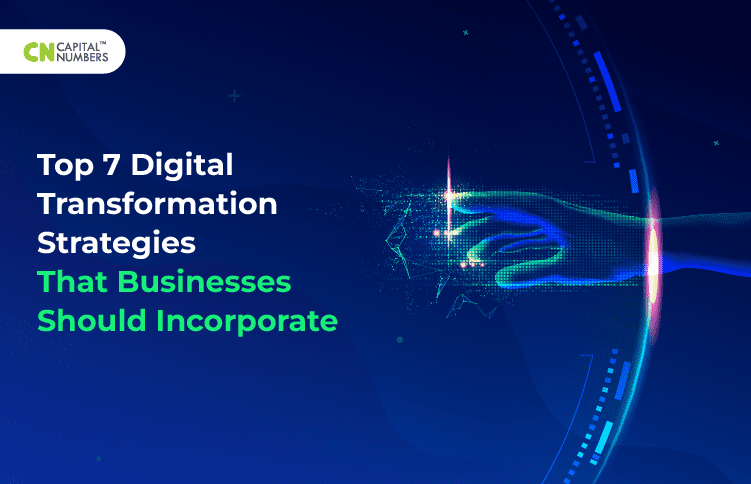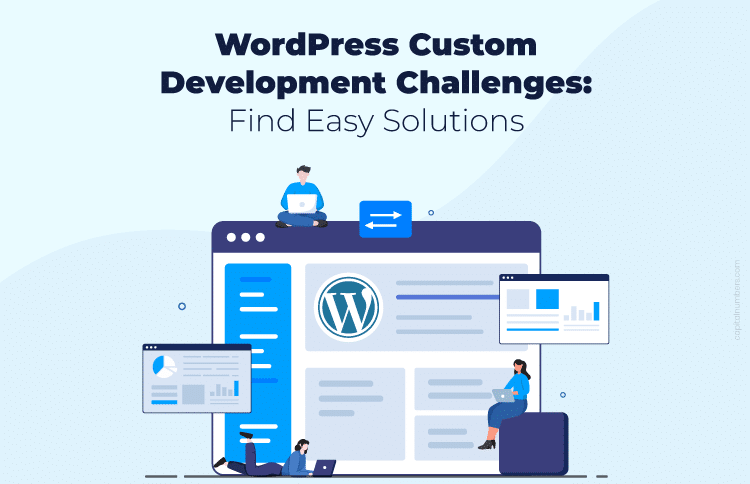Top 7 Digital Transformation Strategies That Businesses Should Incorporate
Table of Contents
Business agility, productivity, and resiliency are vital factors in determining an organization’s success, irrespective of size. And a well-planned digital transformation strategy is essential to leverage technological advancements.
If you want to change the way your company operates and does business, digital transformation is the best option. The question is, though, how? Like every new technological solution, digital transformation has pros and cons. So, how can you be sure that you employ the best practices while seeking digital transformation services and using them in your business? The answer to these questions is rather simple – digital transformation strategy.
What Is a Digital Transformation Strategy?
A digital transformation strategy is a detailed road map of the procedures you intend to use to effortlessly change your business to the digital age and address any obstacles in your way.
Why Do You Need a Digital Transformation Strategy?
A digital transformation involves more than simply implementing new technology, modernizing existing systems, or spending money on fancy gadgets.
You must foresee changes and create innovation independently if you want to be competitive. You cannot simply respond to them. Companies must proactively plan the future and actively shape it to achieve this.
A digital transformation strategy enables leaders to address questions like where they are now, where they want to be, what they need to do to get there, etc.
Businesses must have three essential competencies, including awareness, informed decision-making, and quick execution, to safeguard against digital disruption and successfully navigate their digital transformation.
Also, organizations require reliable data and resources to make decisions allowing them to seize opportunities and reduce risks.
Finally, organizations require agility to implement those strategic decisions quickly and precisely. If not, the opposition will outrun and outperform you.
Your digital transformation will stall if these talents are not woven into the fabric of your company’s culture and business procedures. You can successfully build and use those competencies with a strategy and digital transformation roadmap.
Here’s how to get started.
What Are the Key Digital Transformation Strategies?
Create a Clear Vision of Digital Transformation
Creating a vision that aligns with the company’s growth strategy and instills a feeling of urgency is the first step in undertaking digital transformation. The perks of transformation come from creating a vision for the future, communicating it in the company, seeing the potential synergies from silos, and offering opportunities to everyone to unlock potential.
Seek Top-notch Tech Talents
Technology plays a part in transformation, but so does closing the talent gap between what a company needs in IT skills and where it can find it. Before organizational structure, technology, and processes, digital transformation requires abilities enabling change for desired digital maturity and enterprise-wide impact.
Assess Value Chain
The design, development, and manufacturing of products and services create synergy with the latest technologies. Value chain analysis fuels digital innovation that assists in understanding your company’s needs beyond its offerings. Before beginning the transition, carefully consider the values your company produces. Value chain mapping typically improves user experience, speeds up innovation, and clarifies the need for new technology. And the combination of all these results in digital transformation.
Also Read: 5 Pillars of Digital Transformation: You Must Know
Put Digital into Overall Transformation Strategy
Integrating digital into overall business strategy is a vital digital readiness parameter to achieve success. Digital transformation begins with answering critical questions, including what, how, why, and who. Using processes, data, technologies, information, human factors, etc., a digital transformation strategy creates links between the current situation and the desired long-term objective.
Build New IT Operating Model
Companies must consider how their operations can offer a unique customer experience rather than focusing on different initiatives within organizational units. The easiest approach is to move toward NextGen IT operating models while concentrating on the customer journey and internal processes.
Businesses must integrate customer experience across all channels and departments. Most of the conventional operating models can’t handle constant change. However, the NextGen IT operating model significantly impacts businesses. As a result, they may need to change their fundamental business models to survive.
Use Agility Effectively
Your business model may need to change if you use digital transformation to obtain a competitive advantage. An agile organization will achieve its goals by moving toward its objective continuously and iteratively. Today’s “agile” methodologies are highly integrated into the technology of most companies and project management teams, but this strategy is as beneficial when used at the organizational level.
Being agile implies trying something new, figuring out how it works, and assessing if the outcomes are what you were hoping for. This strategy is highly beneficial for organizations in today’s market seeking digital readiness.
Address Risks & Challenges
Addressing risk and creating a risk management strategy is crucial while migrating. Individuals’ and groups’ behavior within an organization defines its approach to risk-taking in a robust risk-management culture.
Understanding the risk before implementing digital transformation is essential, whether the failure is due to unauthorized usage, obsolete technologies, inadequate operational controls, or inappropriate handling of sensitive information.
Although IT is the key driver of the digital transformation strategy, everyone is responsible for putting it into practice and adapting to the massive changes that come with it. Digital transformation initiatives often reshape workgroups and business processes.
To Sum Up
Digital transformation is more about business strategy and less about technology. It’s about people, processes, and data. Therefore, the transformation won’t happen overnight; it will take time. By creating a strategic roadmap, you can gradually begin to transform essential business areas and ultimately succeed in reaching all the goals. And embracing digital is the only way to thrive in the digital age.
Are you interested in learning more about digital transformation? Capital Numbers provides digital transformation consulting services. Book a call today for digital transformation consultation.















